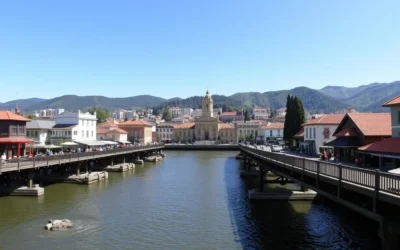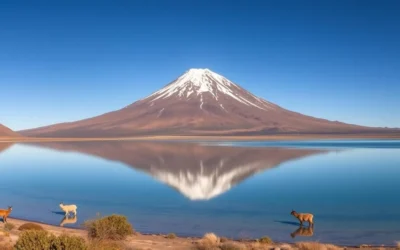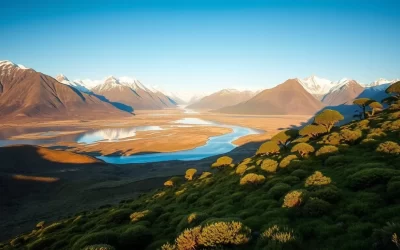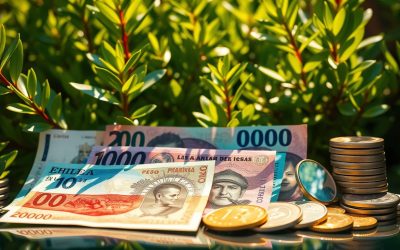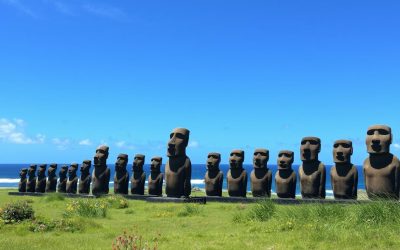Established in 1926, Vicente Pérez Rosales holds the distinction of being Chile’s oldest national park, where an astonishing 90% of its volcanic terrain remains pristine wilderness. This 251,000-hectare paradise showcases nature’s most spectacular elements: emerald lakes reflecting perfect volcanic cones, ancient forests teeming with unique wildlife, and rushing waterfalls carving through volcanic rock. Unlike many popular destinations, this park maintains its wild character while being surprisingly accessible from nearby Puerto Varas.
The iconic Osorno Volcano reflected in Lake Todos los Santos – the park’s most photographed view
Park Overview: Chile’s Volcanic Wonderland
Vicente Pérez Rosales National Park sits in Chile’s stunning Lake District, a region characterized by pristine lakes, ancient forests, and perfectly-shaped volcanoes. The park’s centerpiece is the emerald-hued Lake Todos los Santos, surrounded by three impressive volcanoes: Osorno, Puntiagudo, and Tronador. The landscape here tells a dramatic geological story of volcanic activity that has shaped this region for millennia.
The park’s biodiversity is equally impressive, with temperate rainforests dominated by southern beech trees (coigüe and lenga), bamboo thickets, and ferns. Wildlife enthusiasts might spot pudú (the world’s smallest deer), foxes, pumas (if extremely lucky), and numerous bird species including the colorful slender-billed parakeet.
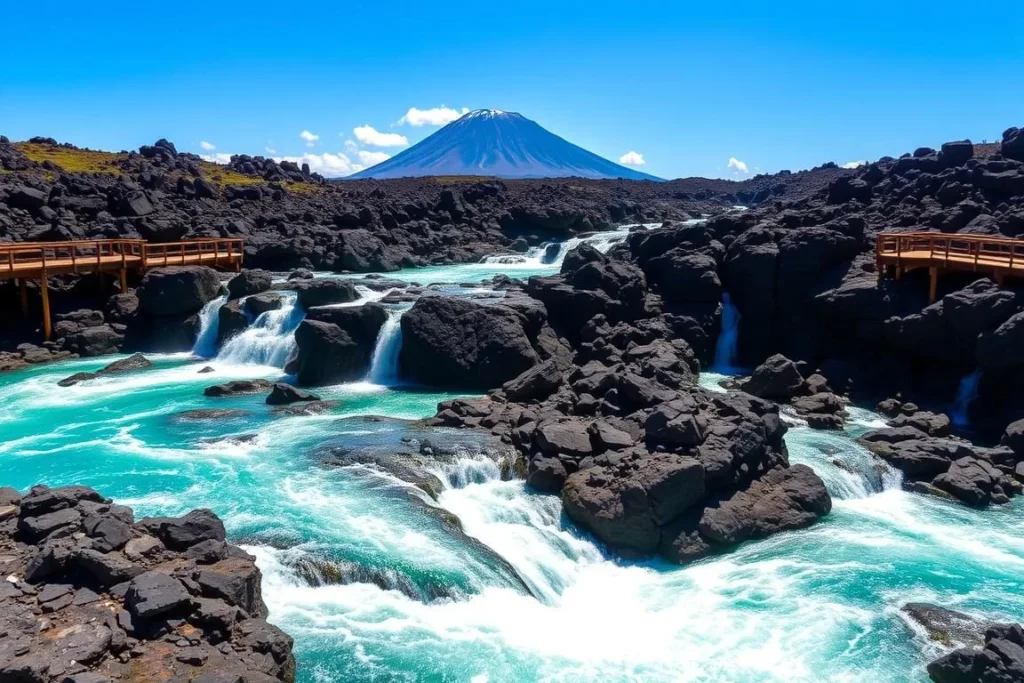
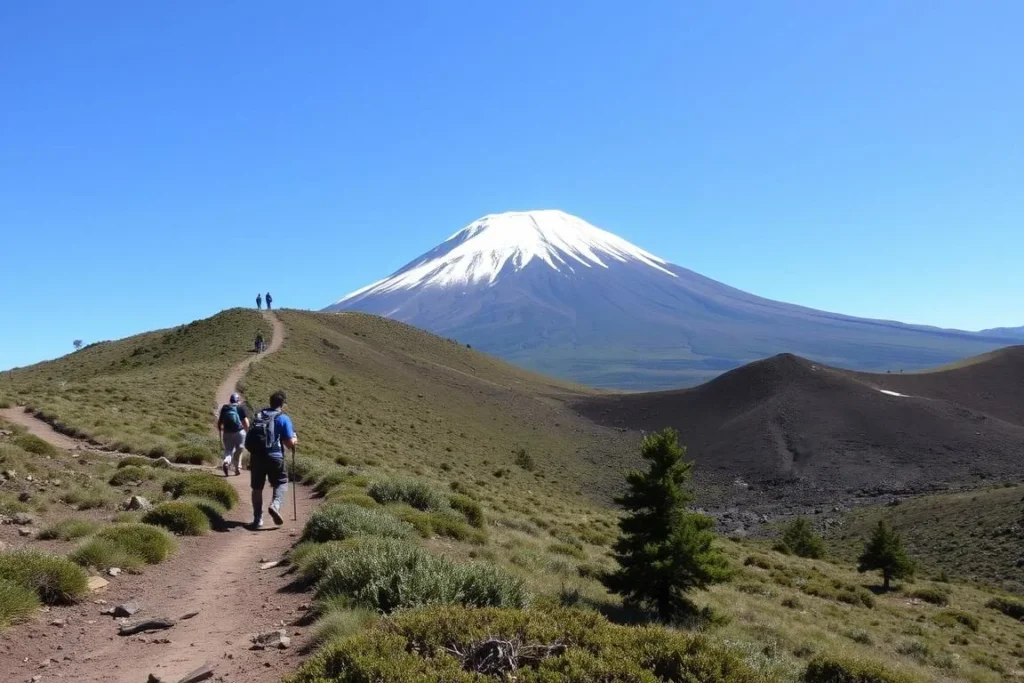
What makes this park special is its accessibility combined with its wild character. Unlike many remote Chilean national parks, Vicente Pérez Rosales can be easily reached from Puerto Varas, making it possible to experience pristine Patagonian landscapes without an expedition-style journey. Yet once inside, you’ll find yourself immersed in a wilderness that feels far removed from civilization.
Getting to Vicente Pérez Rosales National Park
The park is conveniently located just 64 kilometers (40 miles) from Puerto Varas, making it one of Chile’s most accessible national parks. Most visitors use Puerto Varas as their base for exploring the park, though Puerto Montt (23km further) is another option with more flight connections.
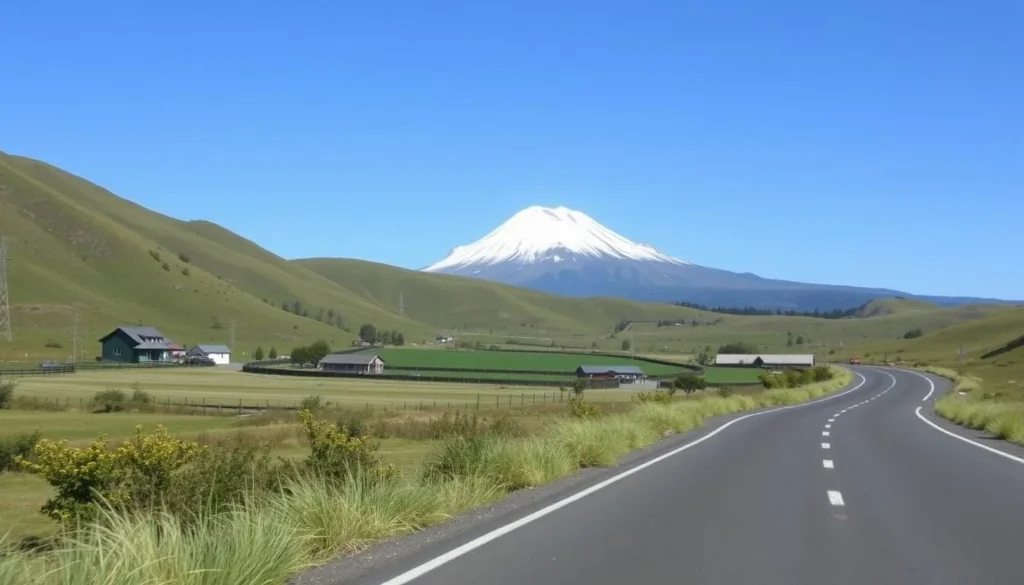
The scenic drive from Puerto Varas to the park entrance offers stunning views of Osorno Volcano
By Air
Fly into Puerto Montt’s El Tepual Airport (PMC), which receives regular flights from Santiago (1.5 hours). From there, rent a car or take a bus to Puerto Varas (30 minutes).
Looking for the best flight deals? Check multiple airlines for your journey to Puerto Montt.
By Car
Renting a car provides the most flexibility for exploring the park. From Puerto Varas, take Route 225 east along Lake Llanquihue to Ensenada (45km), then continue to Petrohué (16km further).
A 4WD vehicle isn’t necessary as roads are well-maintained, but consider one if visiting during winter (June-August).
By Bus
Regular buses run from Puerto Varas to Ensenada and Petrohué throughout the day. The journey takes approximately 1 hour and costs around 3,000-4,000 CLP ($3-5 USD).
For the most up-to-date bus schedules, check with the tourist information office in Puerto Varas or your accommodation.
Park Entrance Fee: 4,000 CLP (approximately $5 USD) for foreign visitors. The park is open year-round, but some areas may have limited access during winter months (June-August) due to snow.
When to Visit: Seasonal Guide
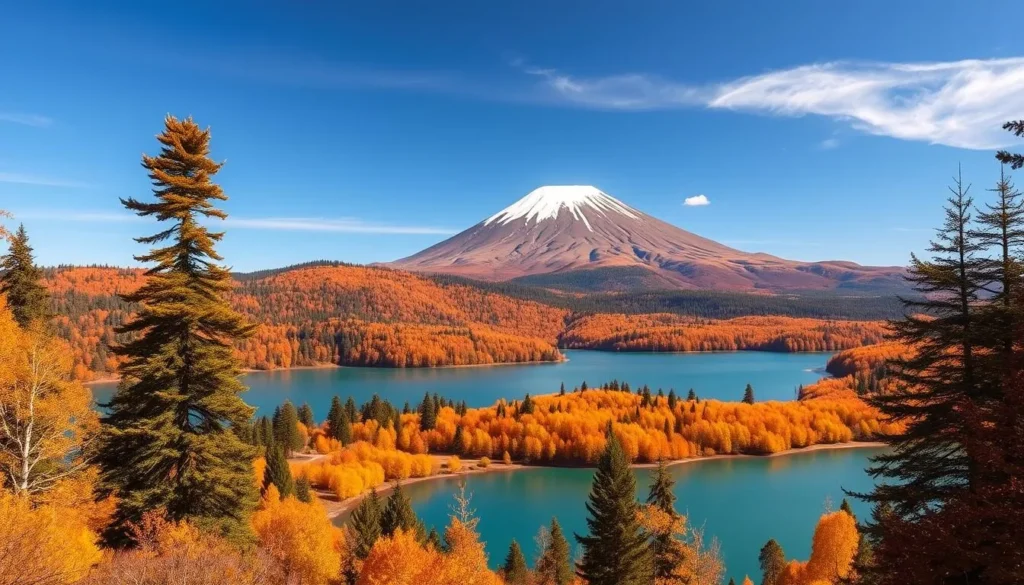
Autumn (April-May) brings spectacular foliage colors to the park’s southern beech forests
| Season | Months | Weather | Crowds | Recommended Activities |
| Summer | December-February | Warm days (18-25°C), occasional rain | High | Hiking, kayaking, fishing, boat tours |
| Fall | March-May | Mild (10-18°C), increasing rainfall | Moderate | Photography, hiking, fall foliage |
| Winter | June-August | Cold (2-10°C), rain and snow | Low | Skiing on Osorno, hot springs, winter photography |
| Spring | September-November | Cool to mild (8-18°C), variable | Low to moderate | Wildflowers, hiking, birdwatching |
The ideal time to visit Vicente Pérez Rosales National Park is during the Chilean summer (December to February), when days are longer and warmer, perfect for hiking and water activities. However, this is also peak tourist season, so expect more visitors at popular sites like Petrohué Falls.
For fewer crowds and beautiful fall colors, consider visiting in March or April when the southern beech forests turn brilliant shades of gold and red. Winter (June-August) offers a different experience with snow-capped volcanoes and the possibility of skiing on Osorno, though some trails may be inaccessible.
Top Attractions in Vicente Pérez Rosales National Park
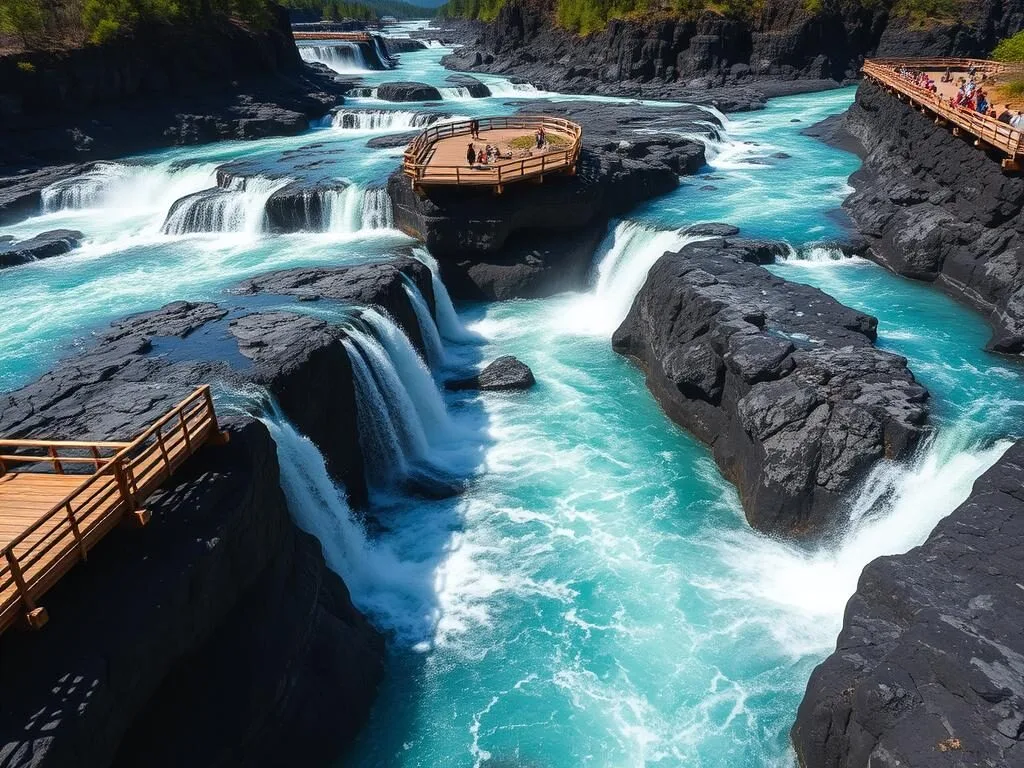
Petrohué Waterfalls
These aren’t tall waterfalls but rather a series of rapids where the Petrohué River forces its way through narrow channels of ancient lava rock. The emerald-blue water creates a stunning contrast against the black volcanic stone. Well-maintained wooden walkways make this attraction accessible to visitors of all abilities.
Tip: Visit early morning or late afternoon to avoid tour groups and get the best lighting for photos.

Lake Todos los Santos
Known as the “Emerald Lake” for its striking color, this glacial lake is the centerpiece of the park. Surrounded by three volcanoes, its shores are lined with native forests. Take a boat tour across the lake or simply enjoy the views from Petrohué.
Activity: The lake crossing (Cruce Andino) to Bariloche, Argentina is a popular full-day excursion combining boat and bus travel through spectacular scenery.

Osorno Volcano
This perfectly conical, snow-capped volcano is often compared to Japan’s Mount Fuji for its symmetrical shape. Several hiking trails explore its lower slopes, while more adventurous visitors can trek higher for panoramic views of the surrounding lakes and mountains.
Challenge: The Desolation Pass (Paso Desolación) trail offers a full-day hike through volcanic landscapes with incredible views.
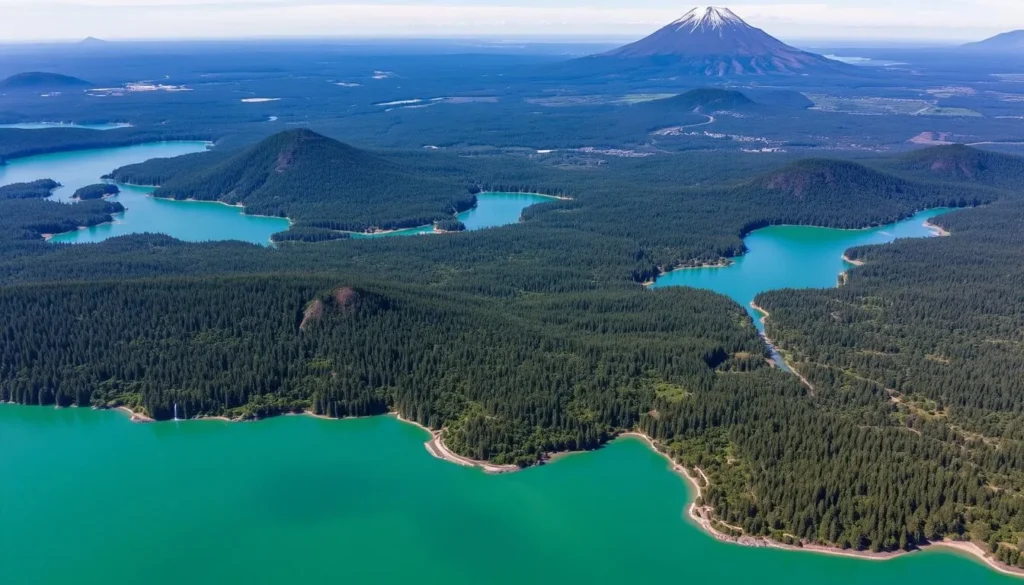
The park’s diverse landscape includes emerald lakes, ancient forests, and volcanic peaks
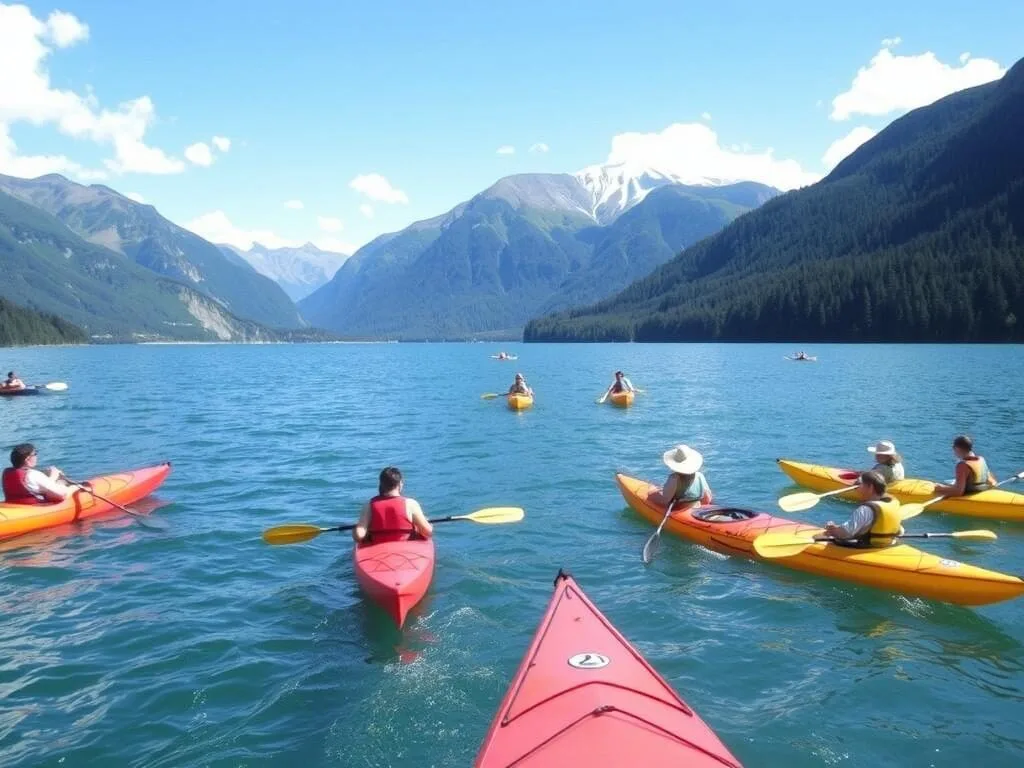
Kayaking & Water Activities
The crystal-clear waters of Lake Todos los Santos are perfect for kayaking, with rental equipment available in Petrohué. For more adrenaline, try whitewater rafting on the Petrohué River below the falls, where Class III and IV rapids provide exciting challenges.
Outfitter: Koka Adventures offers guided kayaking tours suitable for beginners and experienced paddlers alike.
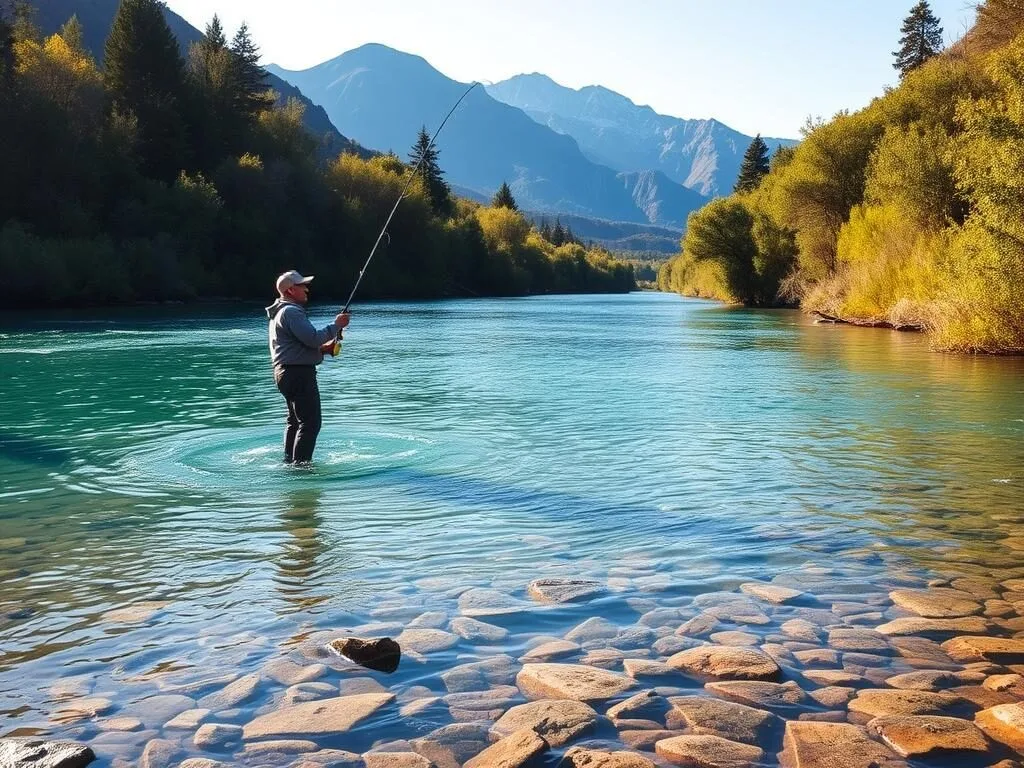
Fly Fishing
The Petrohué River is renowned for its excellent fly fishing, with rainbow, brown, and brook trout in abundance. The fishing season runs from November to May, with peak conditions in January and February. Several lodges offer guided fishing excursions with equipment rental.
Regulation: A Chilean fishing license is required and can be purchased in Puerto Varas or at some lodges.

Termas de Callao
After a day of hiking, relax in these natural hot springs located in the northern section of the park. The thermal waters, heated by volcanic activity, are rich in minerals and maintain a comfortable temperature year-round. The springs offer several pools of varying temperatures.
Access: The hot springs are reached via a 2km trail from the road, making for a pleasant forest walk.
Best Hiking Trails
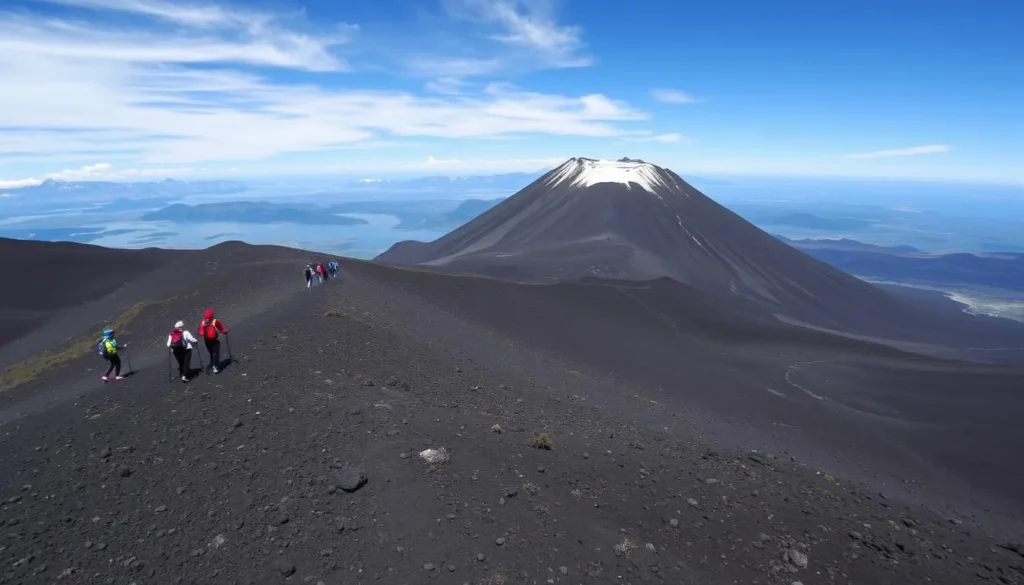
The Paso Desolación trail offers hikers an otherworldly landscape of volcanic terrain
Hiking Safety: Always check trail conditions at the park ranger station before setting out. Weather can change quickly in the mountains, so bring layers, rain gear, and plenty of water. For longer hikes, inform someone of your plans and expected return time.
Where to Stay
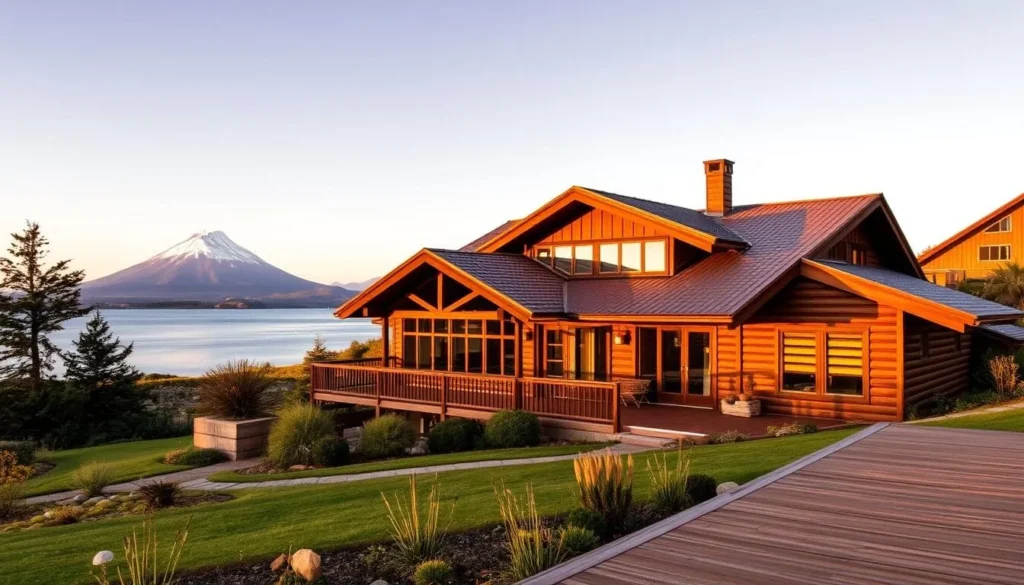
Petrohue Lodge offers comfortable accommodations within the park boundaries with stunning volcano views
Inside the Park
Petrohué Lodge – Located on the shores of Lake Todos los Santos, this upscale lodge offers comfortable rooms with spectacular views of Osorno Volcano. The property features a restaurant serving local cuisine, and can arrange activities including fishing, kayaking, and hiking excursions.
Camping – Several designated camping areas exist within the park, including sites at Petrohué and along Lake Todos los Santos. Basic facilities are provided, but bring all necessary camping equipment.
Puerto Varas (Base Town)
Most visitors choose to stay in Puerto Varas, a charming town on Lake Llanquihue with German heritage, located just 64km from the park. Options range from international hotels to boutique guesthouses.
Luxury: Hotel AWA, Hotel Cumbres Puerto Varas
Mid-range: Hotel Bellavista, Hotel Cabaña del Lago
Budget: Hostal Compass del Sur, Hostel Margouya
Ensenada
This small village is located at the eastern end of Lake Llanquihue, closer to the park entrance than Puerto Varas. Staying here puts you in a more rural setting with excellent views of Osorno and Calbuco volcanoes.
Recommended: Cabañas del Volcán, Hotel Ensenada, Casa Molino Llanquihue
Accommodation options are more limited but generally more peaceful than Puerto Varas.
Practical Tips for Visitors

Park Regulations
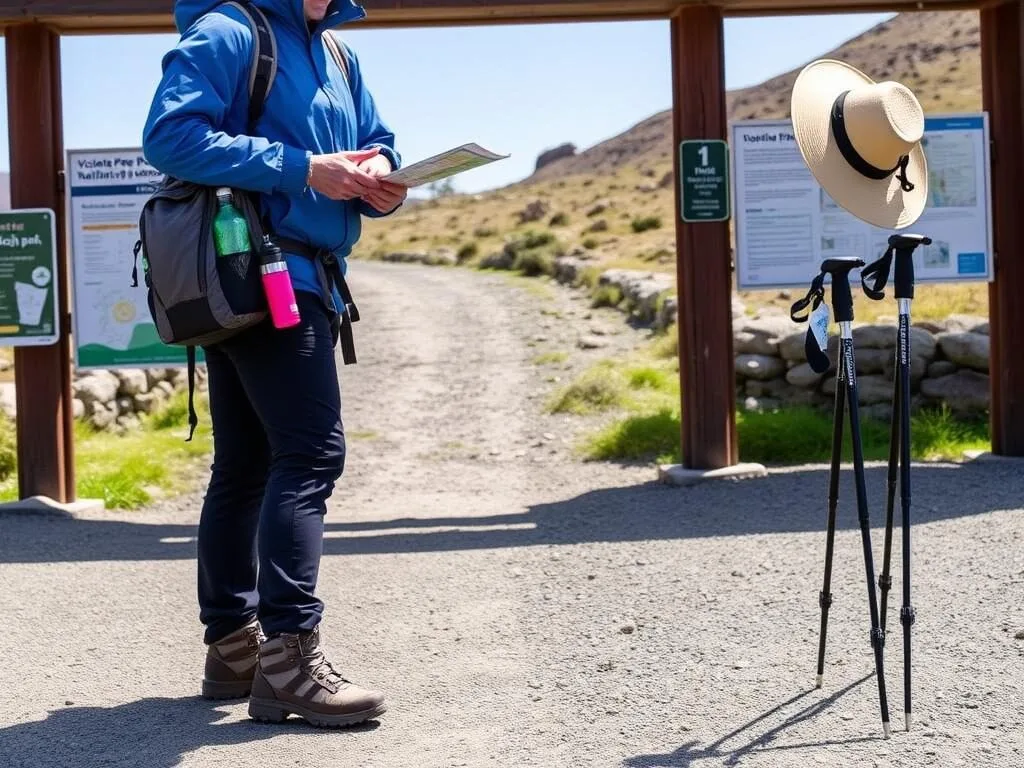
What to Pack
Vicente Pérez Rosales National Park is located in Chile’s Lake District, approximately 64km from Puerto Varas
Language and Communication
Spanish is the official language in Chile. While tourism staff at major attractions may speak some English, it’s helpful to learn a few basic Spanish phrases. Cell phone coverage is limited within the park, so download offline maps and information before your visit.
Currency and Payments
The Chilean Peso (CLP) is the local currency. ATMs are available in Puerto Varas but not within the park. Many establishments accept credit cards, but smaller vendors and some park facilities may be cash-only. It’s advisable to carry some cash for park entrance fees and small purchases.
Nearby Attractions Worth Visiting
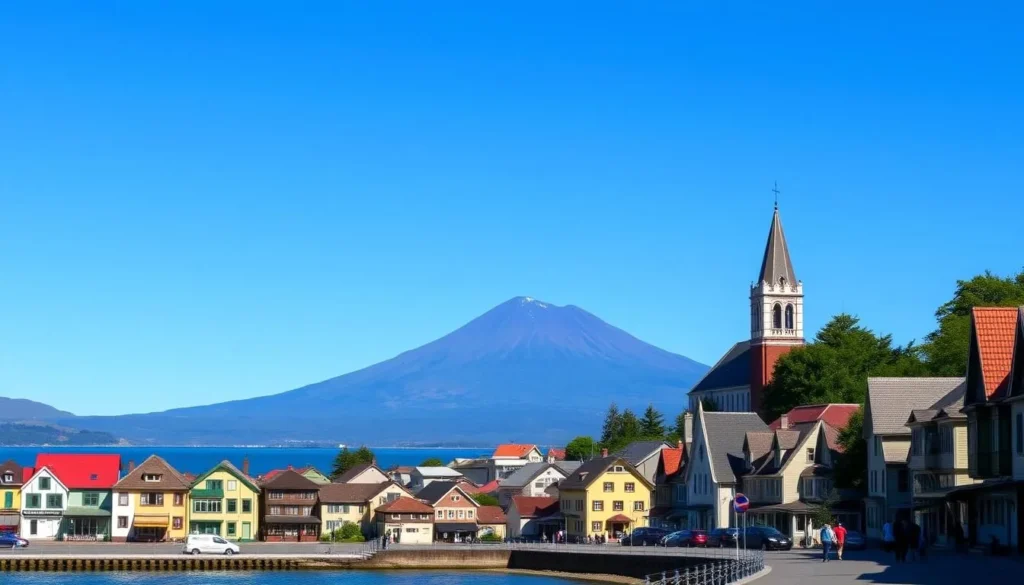
Puerto Varas combines German colonial architecture with stunning lake and volcano views
Puerto Varas
Known as the “City of Roses,” this charming town showcases German colonial architecture, excellent restaurants, and beautiful views of Lake Llanquihue and Osorno Volcano. Don’t miss the Sacred Heart Church (Iglesia del Sagrado Corazón) with its distinctive red and white towers.
Frutillar
This picturesque lakeside town, 30 minutes from Puerto Varas, is famous for its German heritage, wooden houses with flower gardens, and the impressive Teatro del Lago (Lake Theater) which hosts classical music concerts and cultural events.
Chiloé Island
A day trip or overnight excursion to Chiloé Island introduces you to a unique culture known for wooden churches (UNESCO World Heritage sites), distinctive cuisine (curanto), and colorful stilt houses (palafitos) in Castro and Ancud.
Local Cuisine to Try
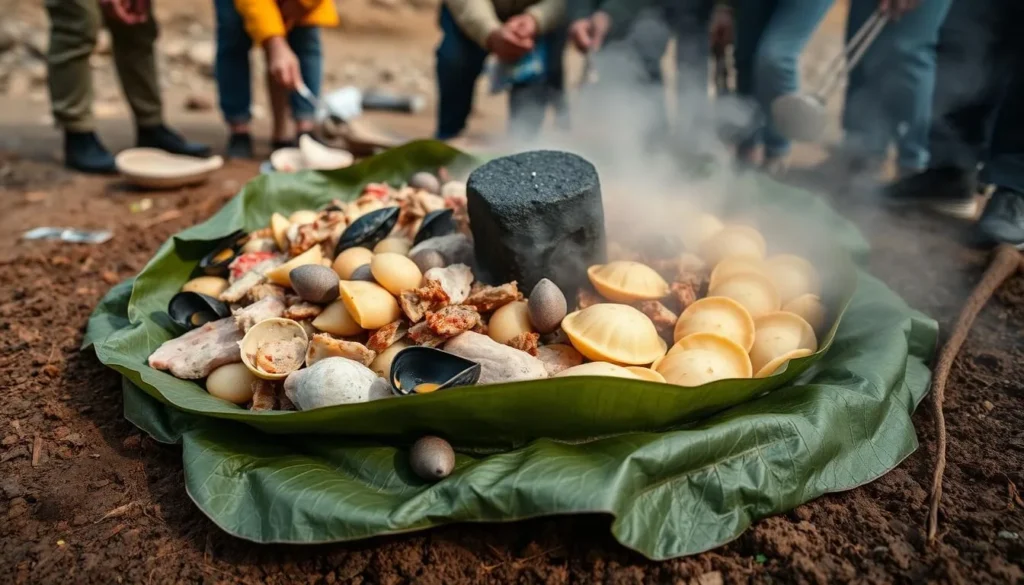
Curanto, a traditional dish of the region, is prepared by cooking seafood, meat, and vegetables in an earth oven
Regional Specialties
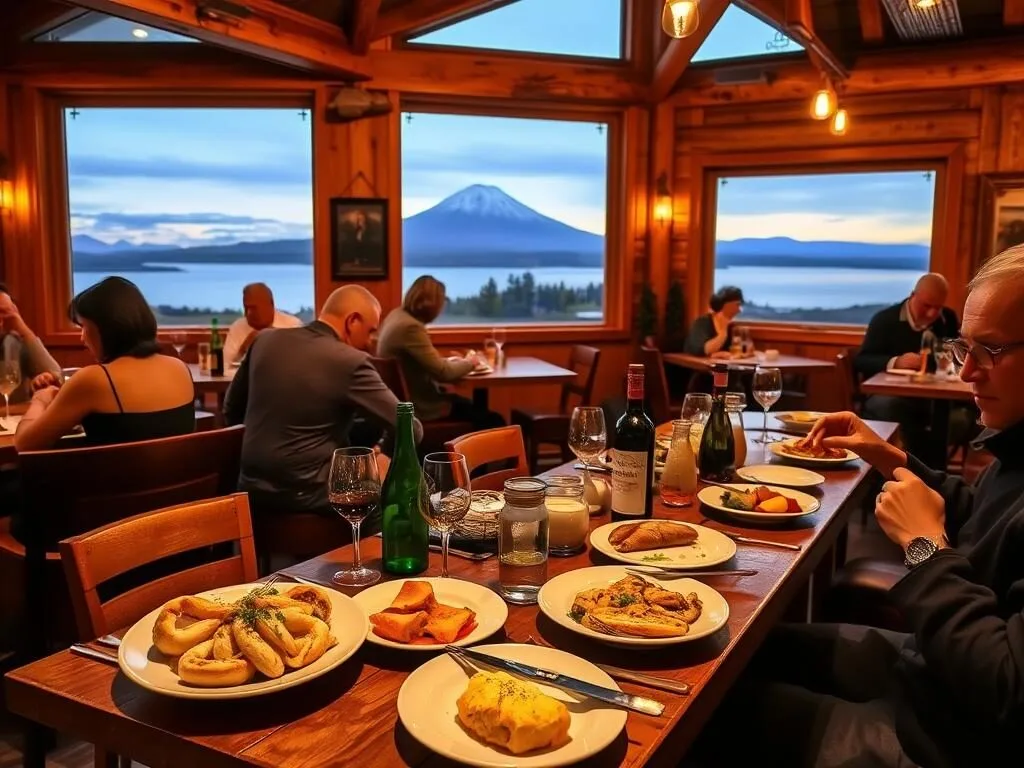
Where to Eat
While dining options within the park are limited, Puerto Varas offers excellent restaurants showcasing local ingredients and traditional recipes:
Plan Your Vicente Pérez Rosales Adventure
Vicente Pérez Rosales National Park offers a perfect blend of accessibility and wilderness, where emerald lakes mirror perfect volcanic cones and ancient forests invite exploration. Whether you’re kayaking on Lake Todos los Santos, hiking the slopes of Osorno Volcano, or simply marveling at the turquoise rapids of Petrohué Falls, this park showcases the natural splendor that makes Chile’s Lake District unforgettable. With comfortable accommodations, excellent cuisine, and activities for every interest, your Patagonian adventure awaits in this pristine corner of Chile.
The above is subject to change.
Check back often to TRAVEL.COM for the latest travel tips and deals.

